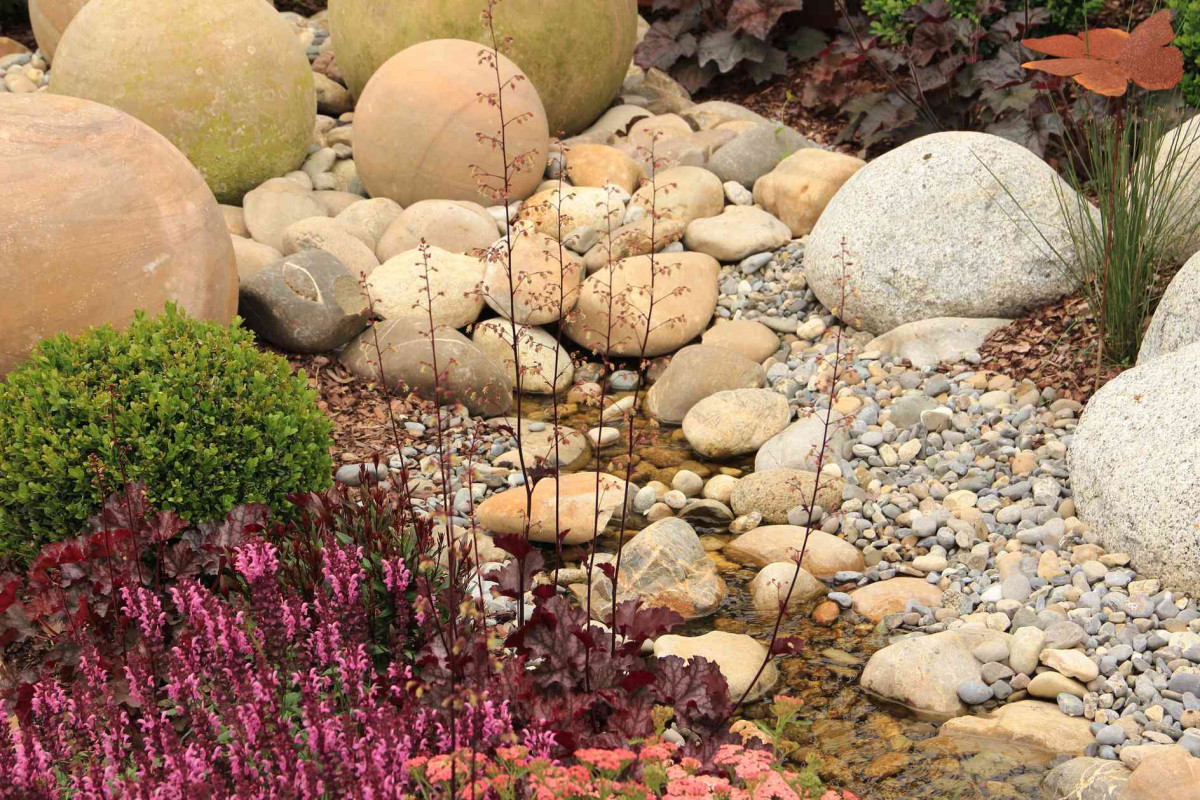DIY Ideas with Sand, Pebbles, and Stones
Florence, United States - May 14, 2024 / LH Stokes /
Do-it-yourself projects have become a staple for homeowners looking to personalize their outdoor spaces without breaking the bank. Utilizing basic materials like sand, gravel, and rocks can lead to stunning transformations that not only enhance the aesthetic appeal of your property but also increase its functionality. In this article, we'll explore several projects including building your own patio with river rock, creating a gravel pathway in your garden, and various DIY landscaping ideas that incorporate these versatile materials.
Building Your Own Patio with River Rock
Plan Your Design: Start by defining the shape and size of your patio. Use string or garden hoses to lay out the perimeter.
- Prepare the Base: Dig the area to a depth of about 6 inches. Fill this with a layer of crushed stone or coarse sand to provide a stable base.
Compact and Level: Use a compactor to press down the base layer, ensuring it’s level. This step is crucial for preventing settling and shifting of the rocks later on.
Lay Landscape Fabric: To prevent weed growth and to keep the rocks from sinking into the dirt, lay down landscape fabric over the base.
Install Edging: Secure the perimeter with metal or plastic edging to keep the rocks contained and maintain the shape of your patio.
Place the River Rocks: Start laying the river rocks, working from one corner. Use rocks of similar sizes for a uniform look or mix different sizes for a more natural appearance.
- Fill Gaps and Settle: Fill gaps between the rocks with smaller stones or coarse sand. Gently hose down the patio to settle everything into place.
Maintaining a river rock patio is relatively simple, involving occasional weeding and topping up of the rocks as needed. This type of patio provides a durable and attractive outdoor space that complements a natural landscape.
Creating a Gravel Pathway in Your Garden
A gravel pathway is not only functional but also a decorative feature that enhances the garden’s layout. Gravel paths are easier to create than paved paths and offer a permeable surface that reduces runoff. To build your gravel pathway, follow these steps:
- Design the Path: Determine the course and width of your path. Curved paths often look more natural and are an excellent choice for informal gardens.
- Remove Sod and Soil: Use a spade to dig out the path area to about 4-6 inches deep, removing all sod and soil.
- Edge the Path: Line the sides of the path with edging materials such as stone, brick, or metal to keep the gravel contained.
- Add Base Layer: Like the patio, a base layer of crushed stone should be applied and compacted to provide a solid foundation.
- Apply Landscape Fabric: Cover the pathway with landscape fabric to inhibit weed growth and separate the base layer from the gravel.
- Pour and Spread Gravel: Pour the gravel over the fabric, spreading it evenly with a rake until it’s about 2-3 inches thick.
Regular maintenance of a gravel path involves topping up the gravel periodically and raking it to keep it even.
DIY Landscaping Ideas with Sand and Gravel
- Zen Gardens: Use fine sand to create a small Zen garden in a corner of your yard. Add larger rocks and gravel for texture and contrast.
- Decorative Mulch: Replace organic mulch with gravel in flower beds for a clean look that minimizes pests and decay.
- Borders and Accents: Use different colors and sizes of gravel to create borders around plantings or features like ponds or statues.
These simple yet effective uses of sand and gravel not only add visual interest but also help in soil moisture retention and weed control.
FAQs
Q: What type of gravel is best for pathways? A: Pea gravel is often recommended for pathways due to its smooth texture and comfortable walking surface.
Q: How often should I maintain my gravel pathway? A: Check your pathway seasonally and rake it to keep the surface level. Add more gravel as needed, usually every 1-2 years.
Q: Can I use any type of sand for a Zen garden? A: Fine, washed sand is best for Zen gardens as it rakes into clean, crisp lines. These projects demonstrate that with some effort and creativity, you can significantly enhance your outdoor living space using simple materials like sand, gravel, and rocks. Whether it’s a place to entertain or a tranquil path to stroll, the transformations are both rewarding and beautiful.

Contact Information:
LH Stokes
1013 Chase St
Florence, SC 29501
United States
Karen Shumpert
(843) 662-4701
https://lhstokes.com/
Original Source: https://lhstokes.com/media-room/#/media-room


